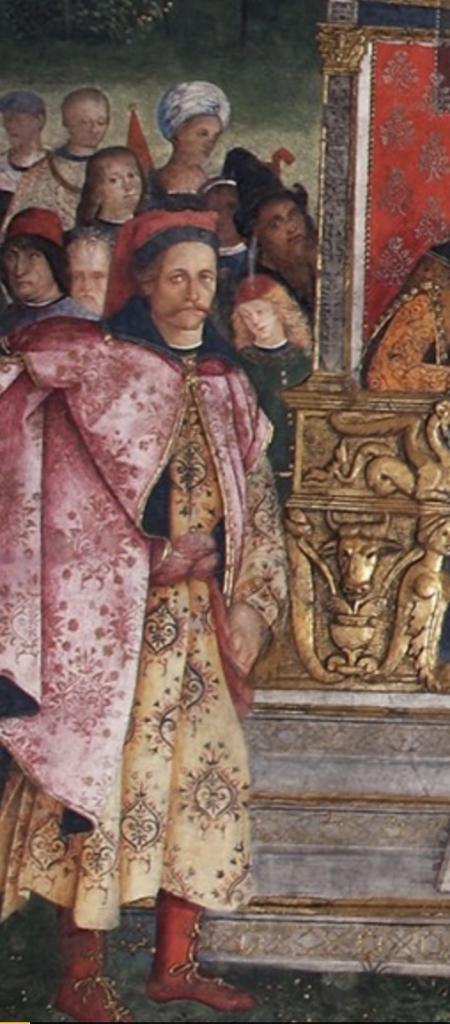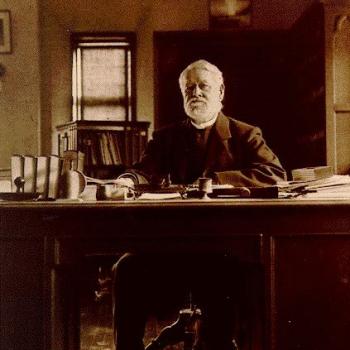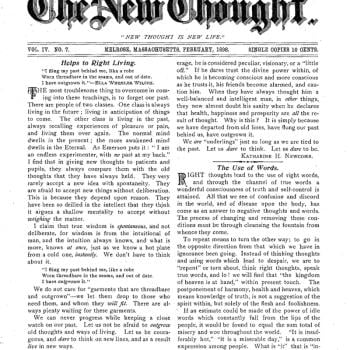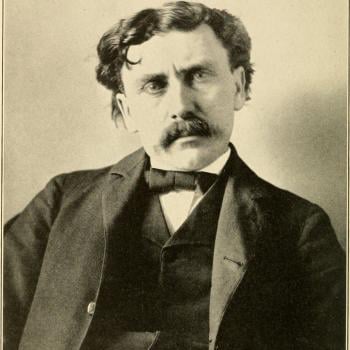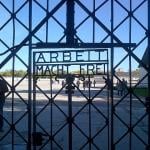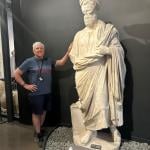I have been posting on Late Byzantine history, focusing on the different ways in which such histories can be written. I have for instance tried to justify looking at the era from the point of view of intellectual elites, because that would be so critical to the larger development of Christianity ever since. Today, I will be using the case of one elite family, because those few elite individuals cast such a long and unavoidable historical shadow. Surprisingly, the story sheds light on some strictly modern political concerns, above all in Russia and Ukraine.
The last dynasty of that much shrunken Roman empire was the House of Palaiologos. The emperor Manuel II reigned from 1391 to 1425, and he married the Serbian princess Helena Dragas. They had a large family, but for present purposes, three of the children demand our attention: John, Constantine, and Thomas. One son succeeded as the emperor John VIII (1425-1448), who was duly succeeded by his brother Constantine XI. Constantine fell in a gallant last stand resisting the Ottoman conquerors of Constantinople in 1453.
That event is often depicted as the end of the world – or at least, of a world – but individuals and families often survive such seemingly terminal catastrophes. In the case of the Palaiologi, some of those continuities are pathetic, and even farcical. The brother of that last emperor, Constantine XI, was Thomas Palaiologos, the ruler or Despot of the Greek territory of Morea, in the Peloponnese. When Constantinople fell, Thomas claimed the title of Byzantine emperor, and received some recognition, but when Morea itself fell to the Turks in 1461, the family fled to Rome.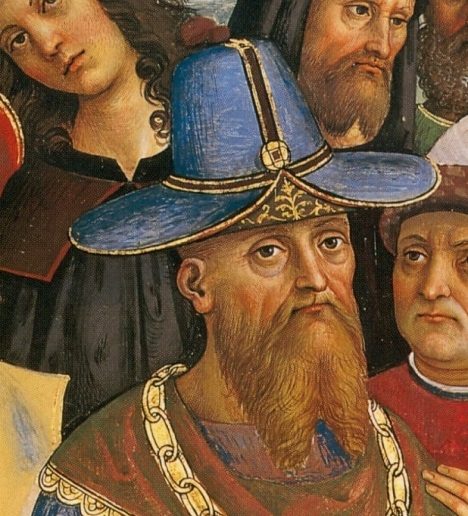
Thomas Palaiologos
Thomas’s eldest son Andreas claimed the title of Imperator Constantinopolitanus, and spent many years in hopeless attempts to restore his Greek territories. In 1494, he sold his imperial rights to the King of France, and when that king died, Andreas tried to hawk those increasingly debased titles to other monarchs. He lived to see the new century, but died (probably) poor and largely forgotten in 1502. “In his will, he granted his titles to Ferdinand II of Aragon and Isabella I of Castile, neither of whom used them.”
Andreas Palaiologos is a historical novel waiting to be written. And here is the ideal book cover:
Andreas Palaiologos
The Last Princes
Wikipedia offers a biographical account of his real and alleged descendants, although the better term might be “rogues’ gallery”:
Theodore Paleologus, who lived in Cornwall in the 17th century and claimed descent from Thomas Palaiologos through an otherwise unattested son called John, might be a descendant of Andreas instead, but his lineage is uncertain. Theodore’s last recorded descendant was Godscall Paleologue, who disappeared from historical records in the late 17th century.
In the late 16th century, a theologian by the name Jacob Palaeologus, originally from Chios, became a Dominican friar in Rome. Jacob travelled across Europe, boasting of his descent and claiming to be a grandson of Andreas Palaiologos, through a supposed son called Theodore. Jacob’s increasingly heterodox views on Christianity eventually brought him into conflict with the Roman church; he was burnt as a heretic in 1585. Jacob had at least three children, the daughter Despina, the son Theodore, and at least another child whose name is unknown, though little is known of most of them. Jacob’s son Theodore lived in Prague in 1603 and referred to himself as a genuine member of the old imperial family and a “Prince of Lacedaemonia”, though the authorities in Prague convicted him as a forger.
More successful than Andreas was his brother Manuel, heir of this great Roman and Christian dynasty. Even so, he became an esteemed commander in the Ottoman navy, where he was praised as a ghazi, an Islamic holy warrior. Manuel’s own son, who had a solid claim to rank as the last heir of imperial Rome, was a Muslim convert who took the Turkish name Mehmet Pasha.
The family epitomized the options adopted by members of the elite: resistance, flight, collaboration, and conversion. And sometimes a mix of all four.
Zoe’s Russia
In the long term, by far the most significant member of the family was Zoe, daughter of Thomas Palaiologos, who was just four years old in 1453. In 1472, Zoe – who had adopted the name Sophia – was married to Moscow’s highly successful Grand Prince Ivan III, the Great: their grandson was Ivan IV, who earned notoriety as “the Terrible.” Dynastic marriages often have political consequences, but this match in particular carried immense weight. Ivan III took the title of Caesar, or Tsar, and adopted the Byzantine double-headed eagle as Russia’s coat of arms. He was entranced by an idea that became something like a national ideology. As the doctrine taught, two Romes had fallen; a Third Rome stood – that is, in Moscow; and a fourth could never be.
Marriage to Zoe/Sophia Palaiologina both consolidated and magnified these aspirations, which attracted varying degrees of interest during imperial Russian history. The Third Rome idea went underground for decades at a time, but it resurfaced powerfully to influence Russian ideology and real-world policies. Catherine the Great (1762-1796) was a passionate believer. I quote Mark Mazower:
Catherine the Great [was] obsessed with the Greeks. She had named a new summer palace after Alexander the Great’s birthplace to inspire her elder grandson. She dreamed of his younger brother sitting on the throne in Constantinople; she built a replica of its great Byzantine church, Ayia Sofia, on the grounds of her estate at Tsarskoe Selo, and she also provided support for the Greeks under Ottoman rule as well.
She dreamed of a neo-Byzantine imperial restoration in the Black Sea, the Balkans, and Anatolia, fantasies that were bolstered by medieval Greek texts of messianic and apocalyptic bent. Across Ukraine and southern Russia, numerous settlements bear Greek- and Byzantine-looking names that were actually invented at the end of the eighteenth century, to reflect Catherine’s Grand Plan. Sevastopol and Odessa are just the most famous, but look at any place in the region with an “-opol” ending (from -opolis, “city”).
Through the nineteenth century, the vision of a Tsar seated anew in a reconquered and re-Christianized Constantinople was the fevered dream motivating Russian policy, and a nightmare that kept British and French diplomats awake many nights. In 1850, an experienced British traveler was just reflecting the common wisdom when he predicted the imminent and inevitable Russian takeover of the whole Middle East:
From Mount Ararat to Baghdad, the different sects of Christians still retain the faith of the Redeemer whom they have worshipped according to their various forms, some of them for more than fifteen hundred years; the plague, the famine and the sword have passed over them and left them still unscathed, and there is little doubt but that they will maintain the position which they have held till the now not far distant period arrives when the conquered empire of the Greeks will again be brought under the dominion of a Christian emperor.
Robert Curzon, Visits to Monasteries in the Levant (London: John Murray, 1850), liii
In the following decade, some 600,000 perished in the Crimean War that grew out of these clashing hopes and terrors.
In the nineteenth and early twentieth centuries, that Russian mystical dream found visual expression in the neo-Byzantine architectural styles that became the official aesthetic of the Tsarist state and its buildings, secular and religious. Like the Latin West, Russians too have a powerful motivation for stressing (and exaggerating) the significance of 1453 as a decisive break in continuity, the collapse of a whole civilization before its transfer to fresh fields.
Zoe/Sophia, by the way, does not need to wait for her appearance in historical fiction. She was the subject of the lavish 2016 Russian television costume drama series Sophia. The series’s co-sponsors included the Russian Ministry of Defense, who were hoping to find political or propaganda advantage in reasserting such imperial claims in the 21st century.
I note one other related piece of contemporary relevance. Andrei Rublev is commonly regarded as the greatest of Russia’s icon painters, and the most influential on later generations. He drew part of his inspiration from native Russian artists, but he also owed much to one Theophanes the Greek, who had come from Palaiologan Constantinople. Rublev’s most famous piece, from about 1410, is his study of the three angels who visited the patriarch Abraham, and which is usually taken as a symbol of the three persons of the Trinity. That very work, surprisingly, is in the current world news. The icon is normally held in Moscow’s Tretyakov Gallery, but the current Tsar, Putin the Inadequate and Over-Compensating, has now commanded that it be given to the Orthodox Church for display and veneration (to the horror of museum officials, who fear for its preservation). Apparently, this gesture is part of an effort to secure God’s favor in the war against Ukraine.
So yes, the Palaiologi do still matter, and so does the twilight empire over which they presided.
At their worst, histories of elite and aristocratic families can be claustrophobic and even self-indulgent, but in some cases, they can open the doors to a wider understanding of their times.



